What Is Samosa and How to Make It Crispy – A Chef’s Complete Guide

Few dishes evoke the kind of joy that a well-made samosa does. The first time I fried them in a professional kitchen, I realized it wasn’t just about the filling—it was about that shattering crispness, the warm spice, the contrast of textures. Whether I’m folding 200 for an event or just a small batch at home, I approach each one with the same attention. This guide is for anyone who’s ever wondered why their samosas turn out soggy or why the crust bubbles unevenly. I’ll show you exactly how to avoid those traps—and make samosas that crackle when you bite in.
- Understanding the Samosa: More Than Just a Snack
- My Go-To Dough That Delivers the Ultimate Crunch
- Time and Cooking Method Comparison for Samosas
- Classic Potato Filling That Never Fails
- Spiced Meat Filling: How I Get It Juicy and Aromatic
- Baked Samosas: My Best Technique for a Lighter Crunch
- Serving Samosas the Right Way (Garnishes, Sauces, and Pairings)
- Creative Ways I Plate and Reinvent Samosas
- How I Store and Reheat Samosas Without Losing Their Crunch
- Gluten-Free and Vegan Dough: What Works, What Doesn’t
- How I Serve Samosas for Kids, Buffets, and Cocktail Events
- Common Mistakes That Ruin Samosas
- FAQ – Expert Answers from a Chef Who’s Been There
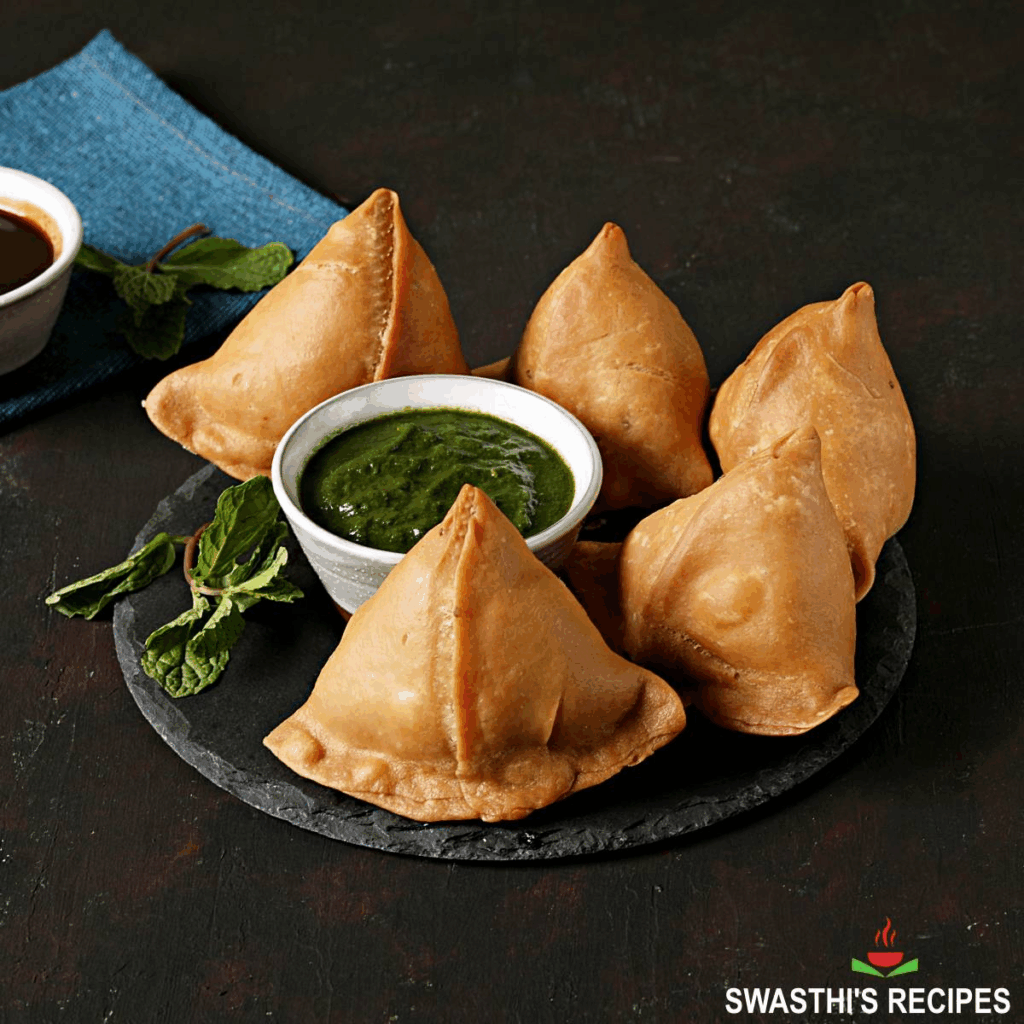
Understanding the Samosa: More Than Just a Snack
Samosas are a form of stuffed pastry, common throughout South Asia but adapted worldwide—from Kenyan sambusas to Middle Eastern samboosak. At their core, samosas are triangular parcels of spiced fillings wrapped in a wheat flour dough, then deep-fried until golden.
While many think of potato samosas first (which are undeniably popular), I’ve made them with lentils, spiced meat, peas, nuts, even sweet fillings like coconut-jaggery. The outer crust, or “shell,” is key—it should be thin but sturdy, never flaky like pie dough.
And when paired right? Samosas sit beautifully beside a dish like Saag Paneer recipe with fresh spinach for a full vegetarian plate . They’re not just starters—they can be the star.
My Go-To Dough That Delivers the Ultimate Crunch
The perfect samosa crust doesn’t puff like a puri or flake like puff pastry. It’s thin, stiff, and shatters slightly when bitten. I learned to make this dough the traditional way in Delhi, and after many trials, here’s what works best.
I mix all-purpose flour with a small amount of semolina or rice flour—this adds crispness. For fat, I use ghee or neutral oil, rubbing it thoroughly into the flour until it feels like damp sand. The water should be cold and added gradually to form a firm, non-sticky dough.
After resting for at least 30 minutes, I divide and roll it thinner than chapati, slice circles in half, and fold into cones. The dough mustn’t be too soft—it will trap steam and bubble during frying.
Don’t rush the rolling. I’ve had students try to shortcut this, and they always end up with blistered, chewy shells. The crunch comes from patience and pressure.
Time and Cooking Method Comparison for Samosas
| Cooking Method | Prep Time | Cook Time | Total Time | Texture Outcome | Notes |
| Deep Frying (classic) | 40 min | 10–12 min | ~50–55 min | Ultra crispy, golden brown | Best method for traditional results |
| Oven Baking | 40 min | 30–35 min | ~70–75 min | Drier shell, light crunch | Brush with oil, bake at 375°F (~190°C) |
| Air Frying | 40 min | 20–22 min | ~60–62 min | Even, light crisp | Use light spray oil; flip halfway |
| Microwave (reheating only) | — | 1–2 min | — | Soft, no crisp | Works for leftovers; wrap in paper towel |
| Slow Cooker | Not suitable | — | — | Not recommended | Moist environment ruins crust; don’t attempt samosas here |
Personally, I deep-fry samosas for events, air-fry for health-conscious clients, and oven-bake when doing large trays for catering. I never microwave from raw—it ruins the texture completely.
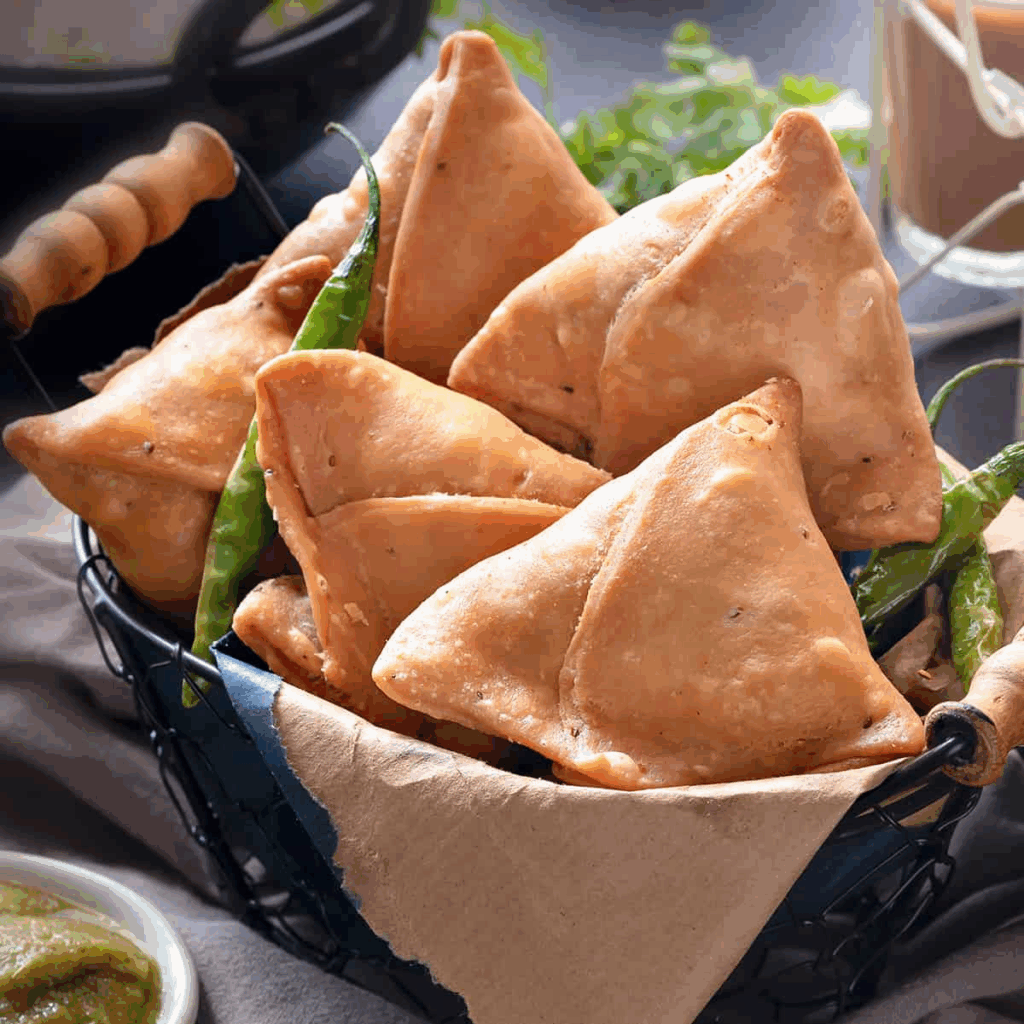
Classic Potato Filling That Never Fails
The most iconic samosa filling? Spiced mashed potatoes with green peas. But even that simple combo can be elevated. I always start by boiling potatoes until fork-tender, then cooling and hand-mashing them—not blending. Texture matters.
In a pan, I heat oil or ghee, add cumin seeds, grated ginger, chopped green chili, turmeric, and a pinch of amchur (dry mango powder). This gives brightness. I toss in the potatoes and peas, adjust salt, and stir until the mix is warm and well-spiced.
A final sprinkle of garam masala and chopped cilantro completes it. Once cooled, the filling is firm but moist—never wet. Wet fillings will tear your dough, guaranteed.
For a protein-packed version, I sometimes add Homemade Dal Tadka: Indian lentil recipe into the mix for a hybrid samosa. Surprisingly hearty and a great way to use leftovers.
Spiced Meat Filling: How I Get It Juicy and Aromatic
When I make meat samosas, my goal is to create a filling that’s rich, moist, and bursting with aroma, but without dripping oil or breaking the wrapper.
I usually go with ground lamb or beef, though chicken works just as well. The meat is sautéed with ghee or oil, followed by finely chopped onions, garlic, and fresh ginger. Once the onions soften, I add ground coriander, cumin, garam masala, turmeric, and a pinch of cinnamon. The cinnamon is subtle but adds warmth that balances the meatiness.
Once the meat browns and the moisture evaporates, I stir in a spoonful of yogurt or tomato purée to brighten the flavor. I finish with chopped cilantro and a squeeze of lemon—never skip the acid, it lifts the whole bite.
To make sure the filling doesn’t burst during frying, I let it cool completely before stuffing. This is crucial. Warm fillings create steam that splits the dough.
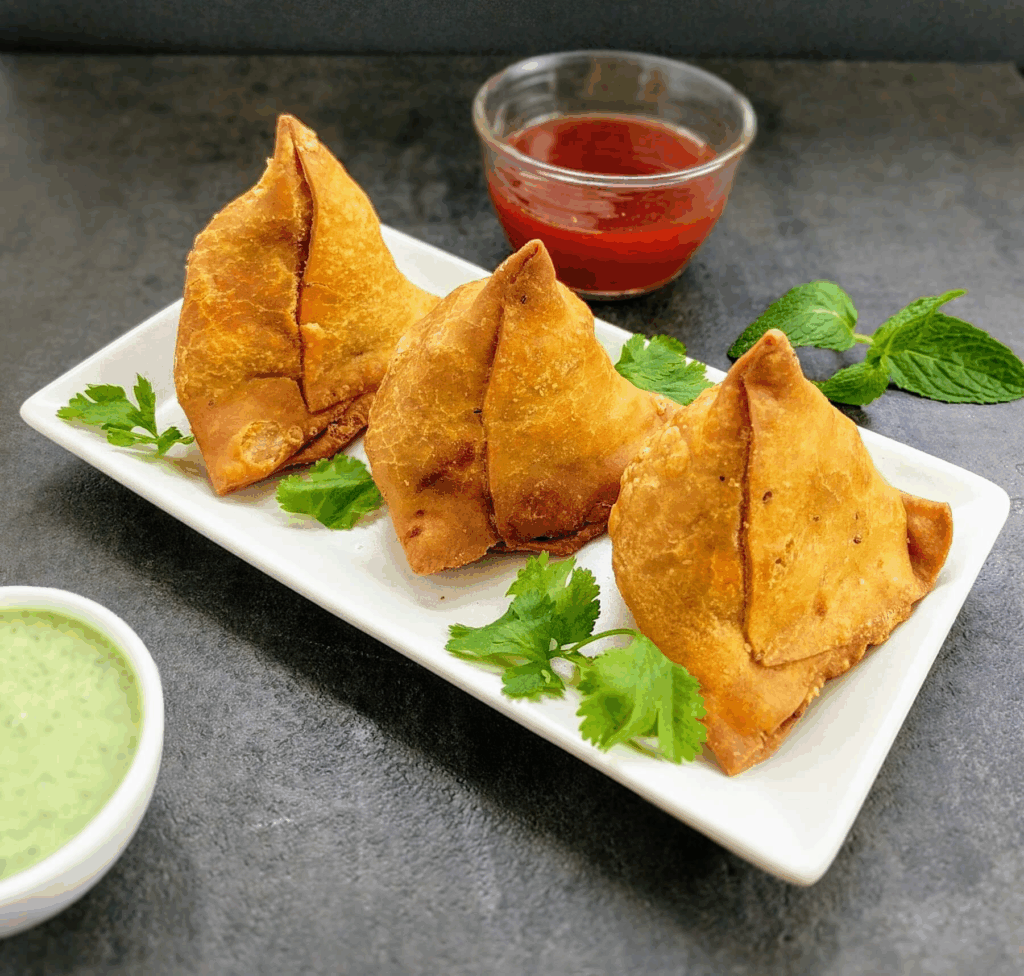
Baked Samosas: My Best Technique for a Lighter Crunch
Baked samosas are my go-to for catering gigs where guests ask for less oil but still want that golden color and structure.
After folding the samosas, I lightly brush them with ghee or neutral oil—not just the top, but all sides. Then I bake them on a parchment-lined tray in a preheated oven at 375°F (190°C).
Midway through, I rotate the tray and flip the samosas. This ensures even coloring. The result? A shell that’s crisp and blistered, though not as shatteringly crunchy as deep-fried.
When I’m doing fusion samosas with unique fillings like cheese-spinach or even mushroom-miso, I prefer baking. These fillings often behave better without the violent heat of frying.
Also, if I’ve got leftovers from a batch of How to cook Aloo Gobi the Indian way, I’ll mix them with a spoon of feta or cheddar and turn them into baked samosa bites. (вставить ссылку здесь)
Serving Samosas the Right Way (Garnishes, Sauces, and Pairings)
Samosas are great on their own, but when I serve them properly—with chutneys, slaws, or curries—they transform into a meal.
I typically plate them with:
- Mint-cilantro chutney: Tangy, cooling, and vivid green. Great with spicy potato filling.
- Tamarind-date chutney: Sweet-sour and syrupy. I drizzle this when I want contrast.
- Raita or yogurt dip: Perfect when the samosa has meat or lots of chili.
- Shredded cabbage salad with lemon and cumin: Adds crunch and acidity.
For a fuller plate, I pair samosas with lentil stews like Homemade Dal Tadka: Indian lentil recipe or a spoon of Saag Paneer to anchor the richness.
Whether it’s a party tray or a single portion, I always serve samosas warm, never piping hot—they need a few minutes to settle and develop their crispness fully.
Creative Ways I Plate and Reinvent Samosas
Over the years, I’ve turned samosas into more than just triangles. Here are a few of my favorite remixes:
- Open-faced samosa tartlets: I press dough into mini tart pans, fill with spiced mash, and bake with a chili-yogurt swirl.
- Samosa chaat: Crushed samosas layered with chutneys, yogurt, sev, and onions. A street-food favorite I elevate with microgreens.
- Mini samosa rolls: Long cigars filled with spinach-cheese or curried lentils, baked until golden.
- Samosa wraps: I wrap classic filling in thin lavash bread or roti, press it on a grill, and serve it with slaw and lemon.
At fusion events, I’ve even paired these with wines and cocktails. Samosas have a natural ability to adapt—as long as you honor the balance of spice, starch, and crunch.
How I Store and Reheat Samosas Without Losing Their Crunch
In professional catering, timing is everything—and I’ve learned that samosas, if not handled properly, can go from crisp to soggy in under an hour.
Once fried or baked, I let them cool on a wire rack. This prevents steam from softening the bottoms. I never store samosas in sealed containers while still warm—that’s a sure path to disaster.
If I’m holding them for service, I keep them uncovered in a low oven at 200°F (93°C) for up to 45 minutes.
For next-day use, I refrigerate samosas on a tray uncovered until fully cold, then loosely wrap in foil or wax paper. I don’t recommend plastic—it traps moisture.
When reheating, the oven is your best friend. I use 350°F (175°C) for 10–12 minutes. Avoid microwaves if you want to preserve the crust.
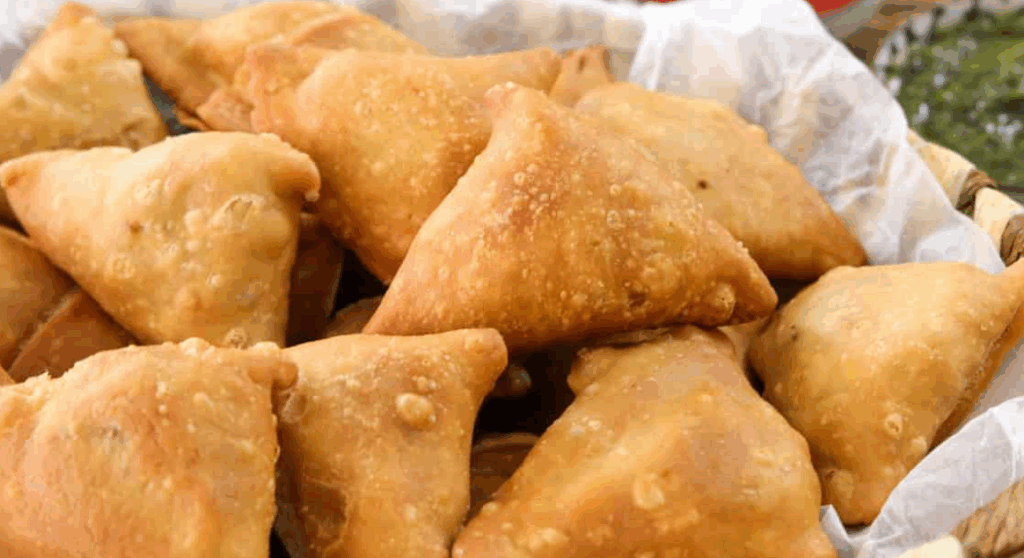
Gluten-Free and Vegan Dough: What Works, What Doesn’t
I’ve experimented with all kinds of dough variations for clients with dietary needs. Here’s what I’ve found that holds up in the kitchen.
For gluten-free samosas, I use a mix of rice flour, chickpea flour (besan), and a little tapioca starch. The key is using hot water to bind it—it creates a pliable, non-crumbly dough.
That said, gluten-free dough is fragile. I roll it between two sheets of parchment and form flatter, half-moon shapes rather than full cones.
For vegan samosas, I simply replace ghee with a neutral oil. Just be sure to rub the oil into the flour properly—this affects flakiness.
For allergy-prone guests, I’ve also done baked samosas using sweet potato dough instead of wheat. The results are surprisingly good if baked, though not ideal for frying.
How I Serve Samosas for Kids, Buffets, and Cocktail Events
Samosas aren’t just for spice lovers or formal tables. I adapt them often for kids’ menus, casual get-togethers, or upscale cocktail parties.
For children, I tone down the spices and fill the samosas with mild mashed potatoes, cheese, or peas. I cut them smaller and bake for easy handling.
At buffets, I go for mini samosas with a variety of chutneys and yogurt dips. They hold well in warmers if lined with paper towels and rotated regularly.
For upscale events, I’ve plated samosas like canapés, served with microgreens, chutney dots, and edible petals. Presentation counts.
Once, I even turned samosas into dessert bites, using sweetened coconut-raisins with a jaggery glaze. They disappeared fast.
Common Mistakes That Ruin Samosas
| Mistake | What Happens | My Fix |
| Dough too soft | Shell bubbles, breaks when frying | Use less water, let dough rest longer |
| Filling too wet | Leaks during fry, soggy base | Cool filling fully, avoid water-rich ingredients |
| Oil temperature too high | Dark outside, raw inside | Fry at 325–340°F (160–170°C) steadily |
| Seams not sealed properly | Filling leaks during fry | Use flour-water paste to seal edges thoroughly |
| Overcrowding fryer or pan | Drops oil temp, uneven cooking | Fry in small batches; allow oil to recover between rounds |
| Reheating in microwave | Samosas turn soft and chewy | Always reheat in oven or air fryer for crisp texture |
| Skipping dough rest | Cracks during rolling or folding | Let dough relax at least 30–45 minutes |
I’ve made every one of these mistakes—and corrected them the hard way. If you want consistently crispy, golden, intact samosas, stick to these principles.
FAQ – Expert Answers from a Chef Who’s Been There
What flour gives the crispiest samosa crust?
From my experience, I always use plain all-purpose flour with a touch of semolina or rice flour. That small addition makes the crust crunchier, especially when deep-fried. It’s a trick I learned after dozens of batches.
Can I freeze uncooked samosas for later?
Absolutely. I do it all the time for catering jobs. Lay them flat on a tray and freeze until firm, then transfer to bags. You can fry them straight from frozen—just give them an extra minute or two.
Why do my samosas get air bubbles?
It usually means the dough is too soft or the oil is too hot. I’ve had this happen early on. A firm dough and frying at 325–340°F (160–170°C) gives the best results.
How do I stop them from opening during frying?
Use a flour-and-water sealing paste and press the edges firmly. I always rest them for 10 minutes after shaping to let the seal set properly.
Can I bake samosas ahead of time and reheat them?
Yes, and I often do. Bake them, let them cool on a rack, then reheat at 350°F (175°C) for 10 minutes. Just don’t wrap them up warm or they’ll go soggy.
What oil is best for frying samosas?
I prefer peanut or canola oil—both are neutral and can handle high heat. Never use olive oil or butter—they burn and ruin the flavor.
Can I use leftover curry as filling?
If it’s thick and not too watery, yes. I often repurpose leftover Aloo Gobi (insert internal link) by reducing it slightly in a pan—it makes a fantastic filling.
Why does my dough crack when I roll it out?
It needs more rest time. I always let it sit for at least 30–45 minutes covered with a damp cloth. That gives the gluten time to relax and makes rolling easier.
Are air-fried samosas worth it?
I’ve tested them a lot. They’re good—not as crisp as deep-fried, but healthier. Spray lightly with oil, and make sure to flip halfway for even coloring.
Can I use store-bought wrappers?
In a pinch, yes. I’ve used wonton or spring roll wrappers for quick versions. Just keep in mind they’re thinner and fry faster, so watch the heat.
What filling works best for parties?
Potato and pea is a classic crowd-pleaser, but I also use lentils, cheese, or minced lamb. For finger food, I keep them small and easy to pick up.
How do I serve samosas with other Indian dishes?
From experience, samosas go perfectly with creamy dishes like Saag Paneer or Dal Tadka. Add a tangy chutney and you’ve got a complete plate.
Can I make sweet samosas?
Yes—and they’re always a hit at festivals. I fill them with sweet coconut, raisins, and cardamom or condensed milk. A dusting of cinnamon sugar after frying brings them to life.
Is there a shortcut to folding samosas?
Sure. Start by practicing with paper to get the fold right. Or just make simple half-moon shapes sealed with a fork—they still taste amazing.
How do I keep samosas crispy at a party?
Keep them warm on a rack in a 200°F (90–100°C) oven. Don’t cover them—steam is the enemy of crispness. I’ve served hundreds this way without losing crunch.




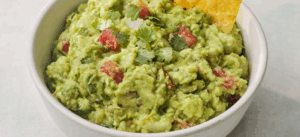
Post Comment